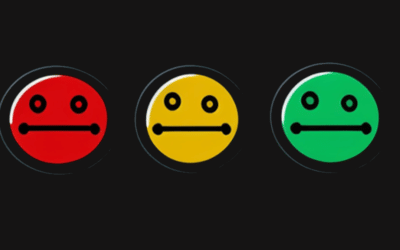Top 7 IT Environment Outages from Last Year
Contributed by Author TJ Simmons
The backbone of business today is digital, and every day we rely more and more on the IT services and infrastructures around us. However, when things go wrong, it can go wrong dramatically and lead to loss of service, loss of revenue, unhappy customers, brand damage and potentially even worse i.e. life and death in some cases.
With that in mind, here are our top seven IT environment outages that left an impact on 2017 in chronological order.
1 – GitLab, January 31
Cause: Accidental Removal of Database
GitLab had an outage lasting nearly 18 hours on January 31st. An outage that impacted myself and team, as we couldn’t push our changes to the repository for a day. Thankfully, it wasn’t during a major or scheduled release and we waited it out without incident.
In our case we lost no data, however, some weren’t so lucky. According to GitLab, they lost “six hours of database data (issues, merge requests, users, comments, snippets, etc.) for GitLab.com.” Nevertheless, GitLab did earn a lot of goodwill for their transparency in handling the outage and to their credit, defended the individual team-member-1 (an experienced DBA) who made the mistake.
2 – Amazon Web Services, February 28
Cause: Wrong Command Accidentally Typed
On February 28th, an Amazon Web Services engineer was trying to debug an S3 storage system in the provider’s Virginia data center when he accidentally typed a command incorrectly. The result? Well, it felt like half the internet was down for four hours. Affected systems include many enterprise platforms, like Slack, Zendesk, Trello, and consumer-facing ones like Quora.
What made things worse was that the AWS Service Health Dashboard (which AWS customers look at for updates on outages) was itself broken. In this case, it showed that only S3 was having issues. But in reality, multiple AWS services weren’t working properly. AWS reported that the error in the dashboard was because “the icons for the many AWS services were hosted in the Northern Virginia region.” That’s the same region where the outage hit the affected services. Yes, this outage was so bad that AWS couldn’t even get its own health dashboard to work properly.
AWS took preventive measures after this, such as running audits on its operational systems. It even adjusted one such system “to prevent capacity from being removed when it will take any subsystem below its minimum required capacity level.” In other words, Amazon doesn’t want to undergo the embarrassment of the 2017 outage ever again.
3 – WhatsApp, May 4
Cause: Unknown (According to Speculation, Updates Were at Fault)
On the same day that Facebook CEO Mark Zuckerberg announced that WhatsApp had more than 175 million users, WhatsApp went down for four hours. Users were loudly complaining about how little information Facebook was sharing about the outage. Even the official WhatsApp Status Twitter account, which appeared to be unused for at least a year, was silent on the matter.
After WhatsApp went back online, Reuters reported that the company’s spokesman only acknowledged the outage and mentioned that they “have now fixed the issue and apologize for the inconvenience.” WhatsApp gave no reason for the outage, but people speculated that the outage was due to an update.
This outage teaches a valuable lesson. When the makers of a heavily-used service roll out a new release, that should be as carefully planned as the development of the release itself. It’s also worth noting that people can forgive and even empathize with human error, as seen in the GitLab accidental deletion incident, however you must own up to it.
When you deliberately make changes, people have expectations about the smoothness of those changes. It’s a no-win situation, of course. Do it well, and you’re just meeting those expectations. But do it badly, and you incur the wrath of many—in WhatsApp’s case, possibly hundreds of millions.
This means managing your test environment and testing the update there prior to release is especially crucial for a smooth rollout of software updates. If you have an ecosystem like Facebook with multiple interconnected systems, it’s even more challenging to manage a test environment manually. Automated testing and management of the test environment are key.
4 – British Airways, June 2
Cause: Accidental Power Shutoff by Contractor
Unlike the other cases so far, this one seems particularly low-tech. But this outage was just as severe, if not even more so. On June 2, British Airways left 75,000 people stranded in UK airports over the weekend. All flights out of London’s Heathrow and Gatwick were canceled. Computer systems were knocked out. Flight operations were disrupted. Call centers and websites went down due to an overwhelming number of requests from customers.
The cause? A contractor working in the British Airways data center accidentally shut down a power supply unit.
If you think you have difficult customers, try having 75,000 angry passengers with disrupted flight plans. Experts warned that the final cost of this outage would be “significant” for the UK flag carrier. It was a fair assessment. British Airways ended up paying “£200 for a hotel room (with couples expected to share), £50 for transport between the airport and the hotel, and £25 per day for meals and refreshments” for every affected passenger.
5 – Marketo, July 26
Cause: Someone Forgot to Renew the Domain
Maybe you haven’t heard of Marketo. If that’s the case, let me tell you a bit about them. Marketo has been a publically-listed company since 2013. It’s widely considered at the forefront of the market for small business lead management—so much so that by 2017, Gartner Magic Quadrant named Marketo the leader in CRM lead management for the sixth year in a row.
So what happened? Well, they forgot to renew their domain. So businesses using Marketo services sent out email campaigns with links that were completely broken. It was a Marketo customer who spotted the expired domain and renewed it before anyone else could. It’s bad enough to have an outage. Having your customer help you is especially embarrassing.
Even the renewal couldn’t completely solve the issue, as DNS propagation can take 48 hours. The Marketo team probably had to ask ISPs to flush the DNS cache for them.
Marketo’s outage had to be on this list, simply because, for some customers, the outage may have lasted as long as 48 hours.
6 – WhatsApp, November 3
Cause: Unknown. Again.
Yup, it happened again. WhatsApp went down for the second time in less than six months. Thankfully, clocking in at one hour, it didn’t last as long as the May outage. But that’s where the differences end. Everything else is the same, from the lack of information about when things would be back up to the lack of clarity about the cause—and the speculation again that it had to do with software issues. Compare this with GitLab’s constant tweeting about their progress in recovering their database.
WhatsApp had two outages in span of less than six months. That suggests the issues are systemic in nature. And when there are systemic issues, the companies affected can find and solve them permanently. I cannot emphasize enough how important it is to permanently solve preventable issues. As we’re revisiting all these cases of outages, the outcomes are almost always negative. You’ve got to prevent them.
7 – Marketo, November 22
Cause: Firewall Issues from Data Center
Yup, another Marketo outage. Less than four months after they forgot to renew their domain and faced the outage mentioned earlier, they faced another outage lasting several hours. The length of this outage wasn’t as bad, but the timing was awful. It happened when marketers were preparing for the weekend of sales activity following the Thanksgiving holiday—in other words, the weekend of Black Friday.
Once again, this certainly sounds like something that was entirely preventable. The company announced a root-cause analysis into this matter shortly after restoring their services…which should be a basic requirement of every such outage on this list.
Conclusion: Minimize Preventable Outages
Of all these outages, it’s those that are the most preventable that should be the least forgivable. Therefore, systemizing a release management or environment operations process is key towards preventing future preventable outages.
Not sure what features constitute a good release management system? Take a look at the Enov8 release management datasheet. Enov8 offers a holistic approach to release management, ranging from at Scale Enterprise Release Management (Agile Release Trains) through to Implementation Planning and ultimately Agile Deployment Operations and Automation (inc CICD).
If you have your own favorite outages then weigh in! Which do you think were the worst?
Relevant Articles
RAG Status: What It Is and Using It for Project Management
Effective Leadership requires effective tooling to drive successful outcomes. One tool they can use to monitor and measure progress is RAG status. RAG stands for Red, Amber, Green, and is a simple traffic light system used to communicate the current status of a...
Enterprise Architecture Tools: 11 to Be Aware Of in 2025
Enterprise architecture (EA) is an essential discipline for organizations aiming to align their IT strategy with business goals. As companies become more complex and technology-driven, having the right set of EA tools is crucial to streamline operations, improve...
What is a Staging Server? An Essential Guide
Release issues happen. Maybe it’s a new regression you didn’t catch in QA. Sometimes it’s a failed deploy. Or, it might even be an unexpected hardware conflict. How do you catch them in advance? One popular strategy is a staging server....
What is Deployment Planning? A Detailed Guide
Deployment planning, sometimes referred to as "implementation planning," is the process of creating a plan for the successful deployment of a new software or system. It involves identifying the resources, tasks, and timeline needed to ensure that the deployment is...
The Definitive Guide to Test Data Generation
Test data generation is a critical part of the software testing lifecycle, ensuring that applications are tested against realistic scenarios before going live. If you’re not testing against production-like data, you’re arguably not truly testing your application. In...
What is a Test Data Manager? A Detailed Introduction
Testing is a critical aspect of software development, and it requires the use of appropriate test data to ensure that the software performs optimally. Test data management (TDM) is the process of creating, storing, and managing test data to ensure its...










